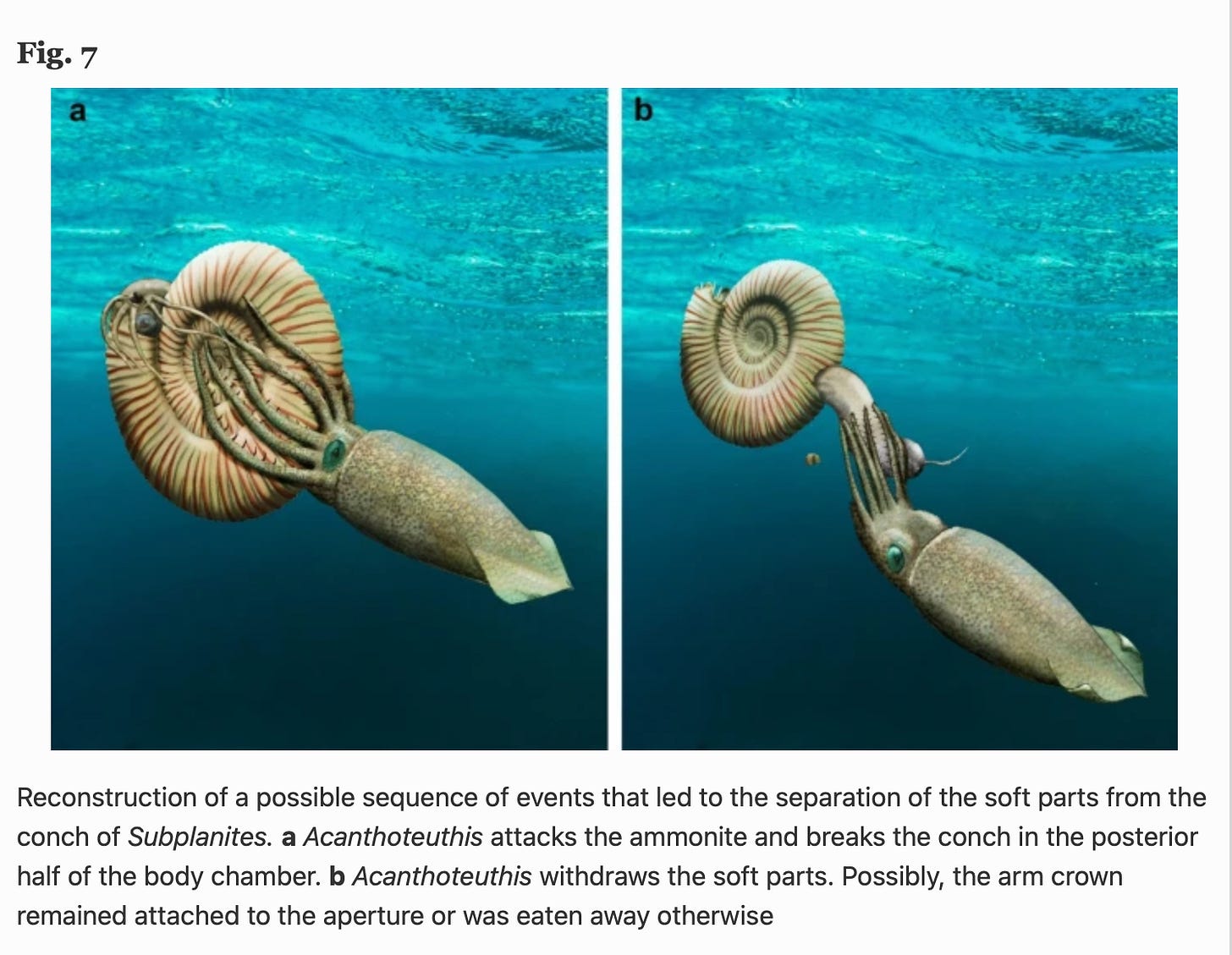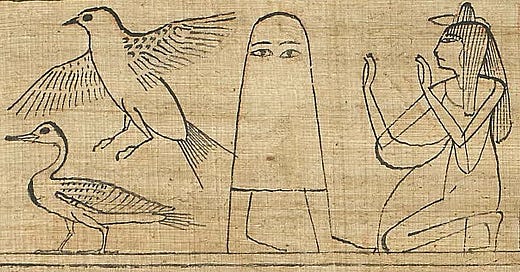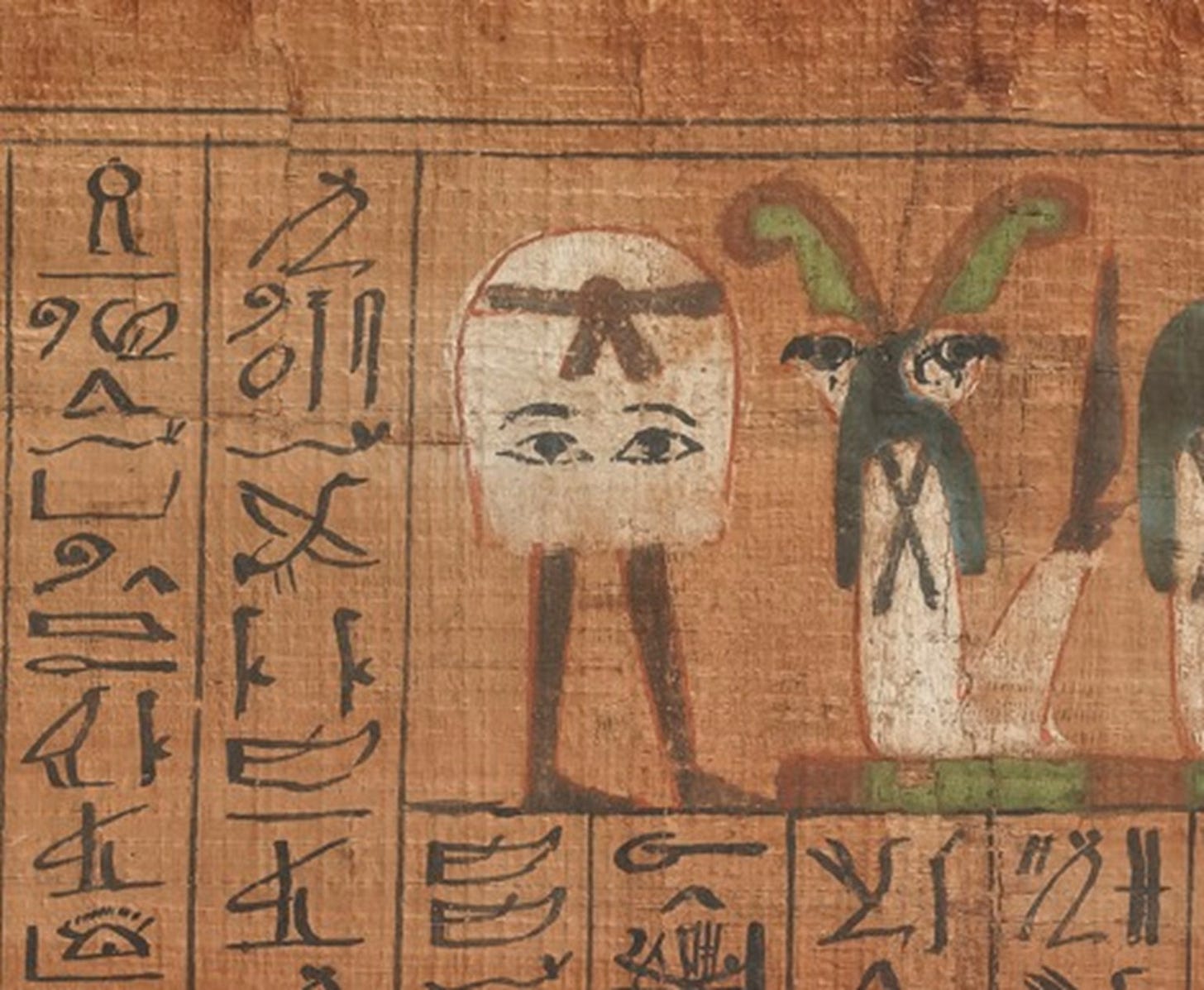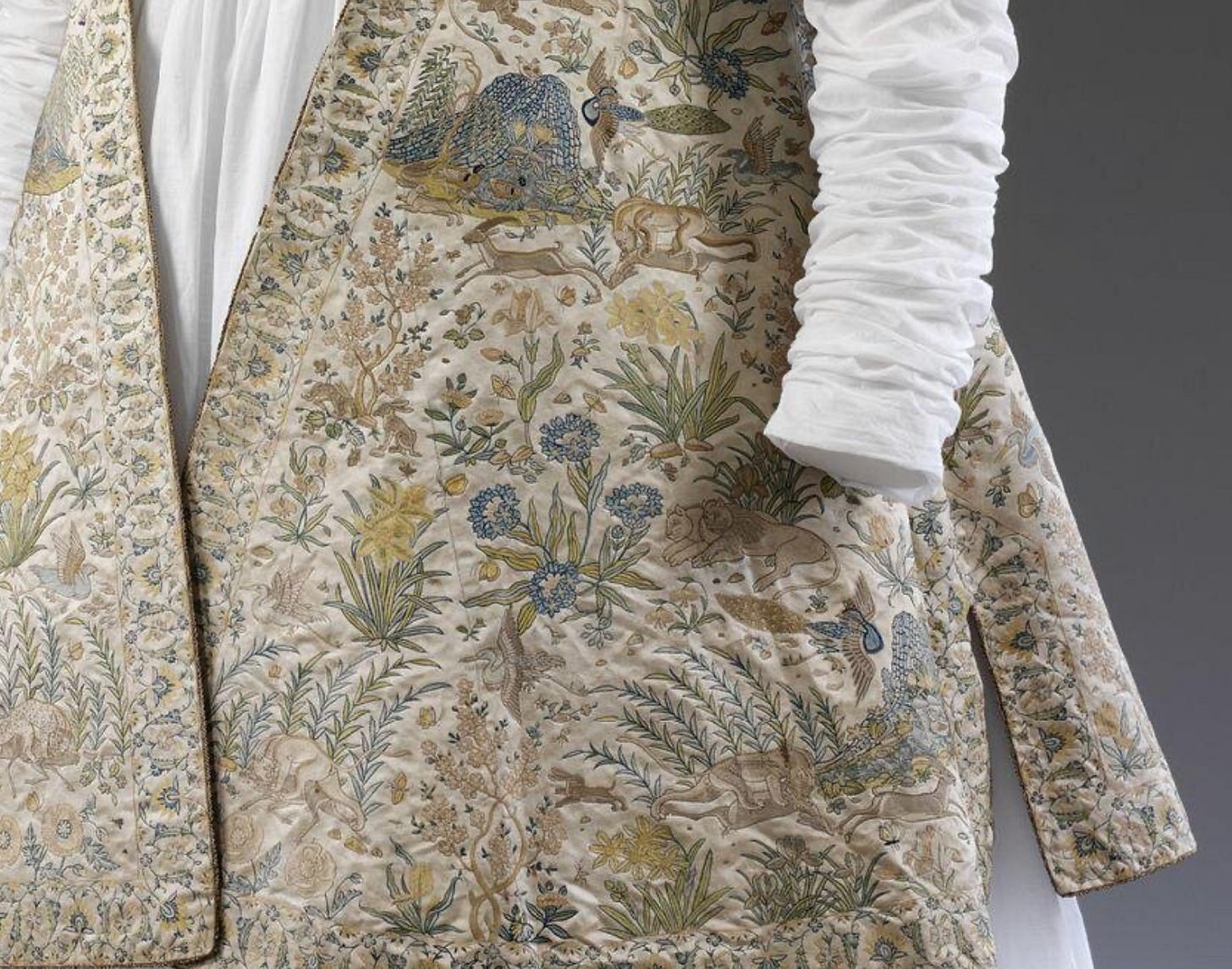Sublime Prosaic, unreasoningly, continues.
I know the name of that Smiter among them, who belongs to the House of Osiris, who shoots with his eye, yet is unseen.
-Egyptian Book of the Dead
We’re here to talk about Medjed.
Medjed, which means something like “the smiter,” is an obscure Egyptian deity, known from only a handful of illustrations and one textual source (spell 17 in some versions of the Egyptian Book of the Dead). We have tens of thousands of objects and papyri from the Egyptians, but Medjed shows up only 9 times, and always as an illustration (as opposed to appearing on other decorative objects). These drawings also show up only during the Third Intermediate Period, running from 1044 through 664BCE. Here is the totality of his written lore:

Medjed seems fairly minor in the pantheon and really only stands out for being very obscure, different, and silly, compared to other Egyptian depictions of deities. He stands on human legs (we know this because the paint color used is the one the artists specifically used for people) and appears to be covered with a blanket. He looks like something made by the most stoned people on Earth for an Adult Swim cartoon.
Canonically, we also know he can fly, shoot destructive rays from his eyes, and breathe fire. A few other surviving drawings of Medjed suggest he might be a ceremonial oil jar…with eyes.
What’s important is that Medjed’s real nature and shape is a secret, so these drawings might just be approximations or attempts to communicate the idea that he is shapeless. Sort of how Wells’ invisible man needs to be wearing a fedora for you to see him at all. To say anything about Medjed is to acknowledge his form is occluded.
Medjed also has strong mascot energy, which may explain why he is beloved in Japan (my thanks to Dr. Rodrigo Salvador for the excellent article on the matter).

I too am a fan of this rascal. He looks like a goofball, but that belies his awesome, destructive power. A real sign for the times. I think he’d look great as a bumper sticker on cars.
You also know his name now, which the Egyptians seemed to believe was important for avoiding him in your voyage in the afterlife.
Welcome to the club, and may you smite, yet remain unseen.
𓅓𓂝𓆓𓂧𓐦
//
Internet Bycatch
Wherein we display what has been accidentally caught in my dragnet of the internet.
This one has been on my mind recently. A little something for people who have the luxury of taking the longer view: “We’ll see.”
Ammonites were once an extremely successful group of animals. We only have the superficially similar nautiluses left today to represent the idea of how they made their living, but these filter feeders were plentiful and diverse in prehistoric oceans. Towards the end of their run, Ammonites also developed increasingly Dr.-Suessian shell shapes for some reason. Please enjoy this short showcase of ammonite diversity, accompanied by jazz music. It just seems right for November, 2024. Talk to your relatives about ammonites at American Thanksgiving, see how it goes.
The nonsensical shell shapes remain a mystery, but one paper from 2021 suggests that these silhouettes helped confuse predators and make ammonites harder to eat (it seems from bite marks that predators were pulling the edible parts of the ammonites out backwards through their shells).

Here is a Mughal jama, or hunting coat, from 1610. It was donated to the Victoria and Albert museum by a random woman, so its previous owner is unknown (although it may have been a diplomatic gift). Importantly, I think this pattern would look great as wallpaper or an all-over print on a silk bomber jacket.








